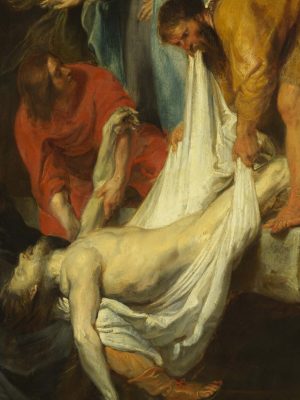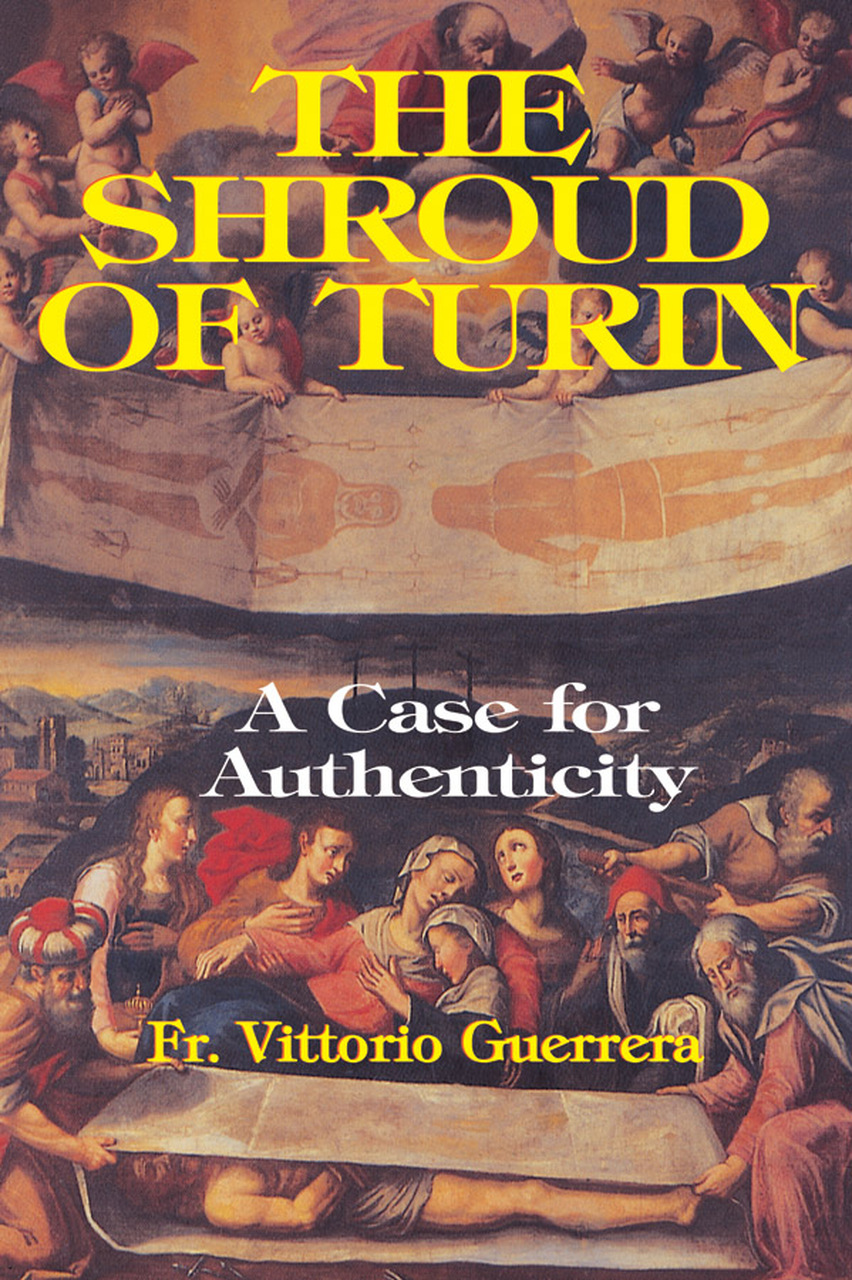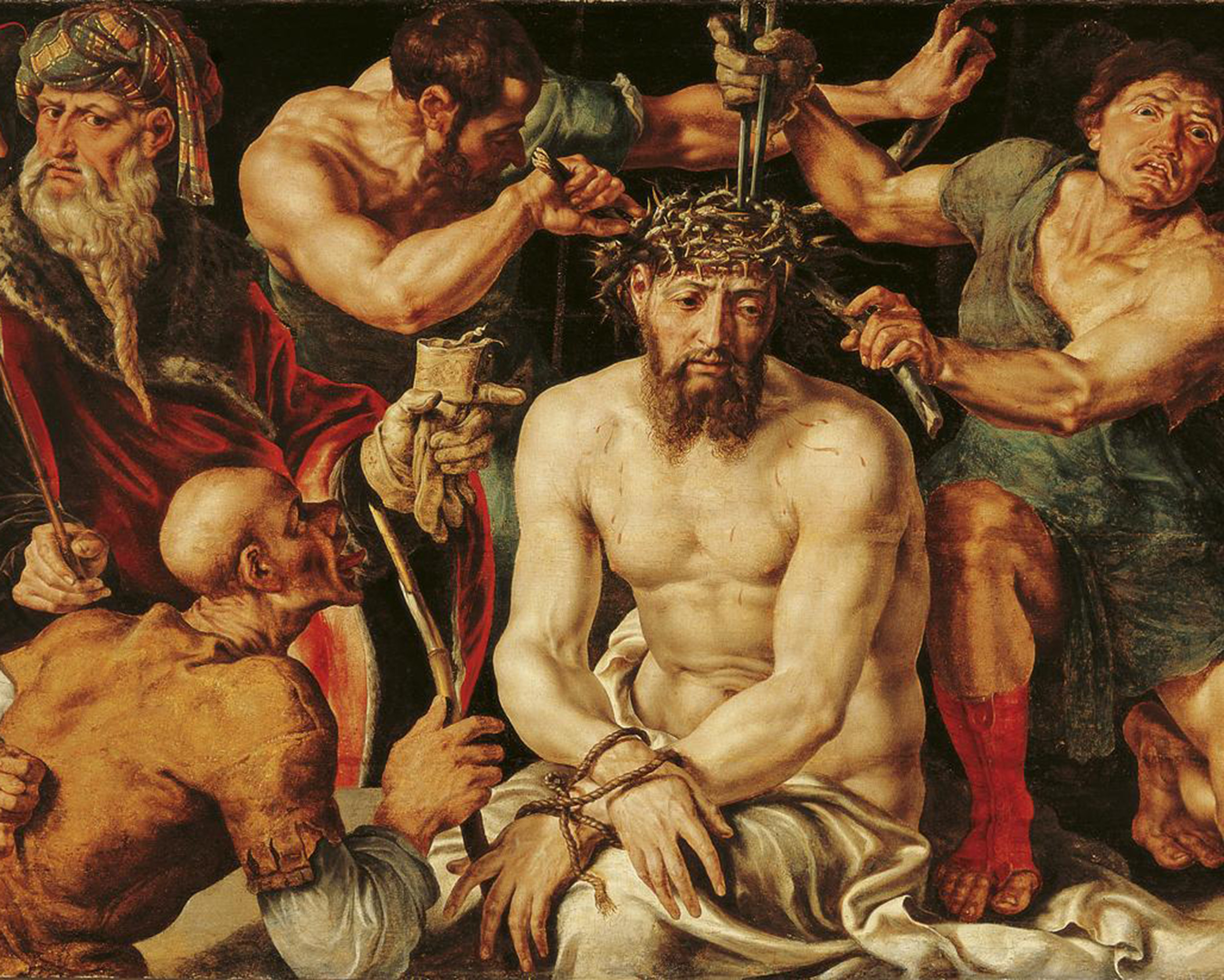The Shroud of Turin is a riveting proof of authenticity that examines every detail of the burial cloth of Jesus. Read on for the marks of Christ’s wounds on the Shroud and what each mark tells us about His Passion.
Christ’s Cause of Death
A popular theory among researchers relative to the cause of death of the man on the Shroud is asphyxiation. The asphyxiation theory has since been challenged by Dr. Zugibe as untenable. Zugibe suggests that given the pre-crucifixion torture that Jesus endured, as well as His agony on the cross, He most likely died of hypovolemic (low blood and fluid volume) shock. By definition, shock is “a state of inadequate perfusion of all cells and tissues, which at first leads to reversible hypoxic injury, but if sufficiently protracted or grave, to irreversible cell and organ injury and sometimes to the death of the patient.” If the shock was caused by low volume of blood and fluid, the cause of death would correspond to a traditional Christian belief regarding Christ’s death, namely, that He died from loss of blood.
The Five Groups of Wounds
Scourging at the Pillar
The first group of injuries is located on the back, ranging from the top of the shoulders down to the calf. These injuries consist of double puncture wounds which appear to go from lateral downward, indicating that an instrument was used in a flicking manner which tore the skin. There are more than 120 strokes which were caused by a whip having either two or three dumbbell-shaped weights made of metal or bone. Based upon the wound patterns of the man on the Shroud, it appears that there were two tormentors, and that one of these scourgers was taller than the other and took particular interest in lashing the victim’s legs.
Crown of Thorns
The second group of injuries can be found on the face and head. The forehead and scalp have a series of bloodstains caused by sharp points. On the forehead one median flow and two lateral flows of blood are seen. Interestingly, the median stain is in the form of the number three on a negative photo, or the Greek letter epsilon on a positive photo, which, if turned on its side, forms the lower-case Greek letter omega. Recall the words of Christ: “I am the Alpha and the Omega” (Rev. 22:13).
Nails Through the Hands
The third group of injuries involves the wrist and forearm. According to Dr. Barbet, a nail was most likely driven between the bones of the Space of Destot, the space between the bones of the wrist. When the nail entered this opening, it enlarged it without shattering any bones, but it injured the median nerve which flexes the thumbs, causing the thumbs to contract. Dr. Barbet pointed out: “That is why, on the shroud, the two hands when seen from behind only show four fingers, and why the two thumbs are hidden in the palms.”
Nails Through the Feet
The fourth group of injuries is located around the feet. The imprint of the right foot is well defined. The left heel is elevated higher than the right, which may have retracted during rigor mortis. What is more, the fingerprints of the person who carried the body of Jesus to the tomb can be seen on the heels of the feet, most notably on that of the left foot.
Pierced by a Lance
The fifth group of injuries is the wound on the right side of the man on the Shroud, or our left (when looking at the negative image). The bloodstain here, partially hidden by a patch sewn on by the Poor Clares in 1532, measures 21/4 inches wide and comes down about 6 inches. The oval-shaped wound corresponds to the shape of a Roman lance which entered between the fifth and sixth ribs. If the lance had entered the left side of the chest, it would have penetrated the ventricles, which in a dead body do not contain blood. Bucklin likewise believes that this wound was inflicted after the man was dead, because the blood did not spurt out, but rather came out slowly.
Bucklin attests: “If I were asked in a court of law to stake my professional reputation on the validity of the Shroud of Turin, I would answer very positively and firmly that it’s the burial cloth of Christ—and that it is Jesus whose figure appears on the Shroud.”
ooo
This article is taken from a chapter in The Shroud of Turin: A Case for Authenticity by Fr. Vittorio Guerrera which is available from TAN Books.





